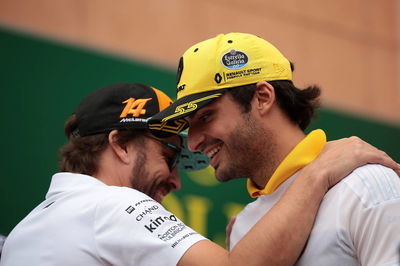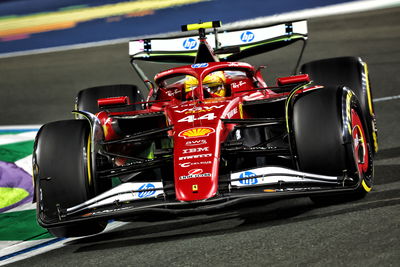Is Seidl the missing piece in McLaren’s F1 jigsaw?
The task of turning a Formula 1 team around is not one to be taken lightly, particularly when the marques in question are the two most successful in F1 history.
In the past five days alone, Ferrari and McLaren have both appointed new figures to head up their F1 programmes in Mattia Binotto and Andreas Seidl respectively.
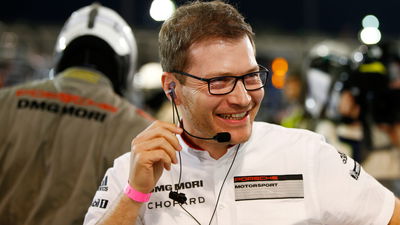
The task of turning a Formula 1 team around is not one to be taken lightly, particularly when the marques in question are the two most successful in F1 history.
In the past five days alone, Ferrari and McLaren have both appointed new figures to head up their F1 programmes in Mattia Binotto and Andreas Seidl respectively.
While Binotto may face pressure to end Ferrari’s decade-long title drought and undertake internal changes in the wake of Maurizio Arrivabene’s departure, it is Seidl who arguably faces the more unenviable task as McLaren bids to turn its fortunes around and end its years of strife.
As much as the team would also be hoping to end its own decade-long title drought, the harsher reality is that even a podium would be a breakthrough for the crestfallen team, having last recorded a rostrum nearly five years ago.
But in Seidl, it appears to have snapped up one of the brightest talents in global motorsport, bringing him back to F1 after nine years away.
Seidl was part of BMW’s F1 operation prior to the manufacturer’s withdrawal from F1, after which he moved across to spearhead its return to DTM in 2012 when it won all three titles at the first attempt. Seidl’s success sparked interest from Porsche as it plotted its return to the premier class of sports car racing in 2014, with the German becoming its LMP1 team principal.
And again, success came quickly. Porsche dethroned Audi as the king of LMP1 in 2015 as it won both the 24 Hours of Le Mans and the FIA World Endurance Championship title that year, with the same success following each of the next two years.
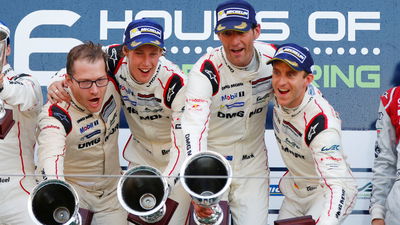
As the ramifications of the Dieselgate scandal began to be felt in the German automotive industry, change was afoot for Porsche motorsport’s interests as it quit LMP1 at the end of 2017 in order to establish a programme in the greener and cheaper Formula E. Seidl embraced this challenge with the same unwavering gusto of his previous projects, with whispers in the Formula E paddock suggesting Porsche would be setting a new, outstanding benchmark upon its entry to the series in 2019.
So for Seidl to give all of that up so suddenly back in November came as a big surprise – but naturally pointed to a new challenge emerging elsewhere that had piqued his interest. Sources confirmed to Crash.net over a month ago that Seidl would be joining McLaren, with the move finally being made official on Thursday.
Seidl arrives at Woking with a proven track record in motorsport, lifting teams from the ground up to become the pace-setters. In that regard, he fits the bill for what McLaren requires right now precisely, with the team setting out a long-term plan for turning its fortunes around after years of struggles.
During his time at Porsche, Seidl worked closely with Brendon Hartley, winning two WEC titles together and Le Mans in 2017. Hartley spoke warmly of his former team boss back in November amid speculation of a move into F1.
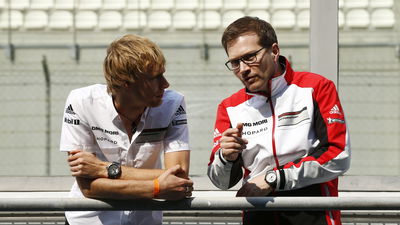
“I have a huge amount of respect for Andreas, I learned a lot from him,” Hartley said. “He was definitely the best team principal I’ve ever worked with, and was an integral part of the LMP1 programme, and I really enjoyed working with him.
“I don’t know what his future is, but I really wish him all the best, and whatever it is, it’s fully deserved."
Seidl’s rise into a top F1 role may be deserved, yet he will arrive at McLaren facing a very different challenge to the one that he faced with either BMW or Porsche. In both programmes, the money and resources were there to push to the nth degree, particularly in the case of Porsche’s LMP1 operation, where the annual budget was understood to be running at around double what McLaren spends in F1 now.
Right now, McLaren is a team that cannot compete with the likes of Mercedes, Ferrari and Red Bull from a budget standpoint. It also lacks proper manufacturer support, being a Renault customer outfit. This is no Porsche – far, far from it.
But Seidl will be entering this project with his eyes wide open. McLaren knows it may face a couple more tough years as the hangover of its recent malaise lingers. Instant success is not expected – although the changes to stimulate success are.
This is something McLaren Racing CEO Zak Brown has been working on throughout his first two years heading up the overall brand, with action being taken through much of 2018. The team’s technical leadership was overhauled as chief technical officer Tim Goss and chief engineer Matt Morris both left, while racing director Eric Boullier left suddenly in the summer after four years with the team under a cloud of ‘Freddogate’.
“What got us here this year started five years ago. This year’s problem is years in the works,” Brown said in Abu Dhabi, reflecting on McLaren’s difficult season that saw it finish sixth in the championship.
“My summary of that is that we’ve had a lack of consistent leadership. I don’t point the fingers at any one individual. That was a lack of focus because of all the activities that were going on, from the board room down: buyouts, merging of companies, team principals in, team principals out, CEOs in, CEOs out.
“It was just a constant revolving kind of lack of focus, and I think that’s what created the issue. Then what fell out of that is that people didn’t have clear goals and accountability, responsibility. Ultimately that’s what produced a poor race car this year.”
The restructuring of the McLaren operation has seen Brown take a more overarching role as CEO, while former advisor Gil de Ferran has stepped up as sporting director. But there was still a lack of true leadership for the F1 operation, taking time away from both Brown – for whom commercial interests are the priority – and de Ferran, who is going to focus more and more on the human performance and management side of the team.
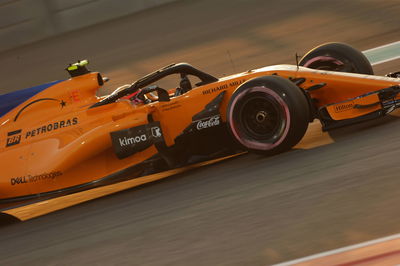
This is where Seidl comes in as the perfect leader. Between his arrival and that of incoming technical director James Key – who Brown anticipates will join in time “to help influence the progress of next year’s car and ultimately the development of 2020” – McLaren will have a clear, simplified structure in place. Importantly, it is one that is also nearing completion for the vision the team has.
“Like a Formula One car, you are constantly developing your organisation and you can never sit still,” Brown said.
“I think since we started making changes in the middle of last year, we have made a lot of changes and we want to make sure those people and processes settle in. It is an ongoing process.
“We are not done – I’m not sure that you are ever done – but I would say things are starting to shape up and take a form that I am happy with for how we should go racing in the future.”
And that is where McLaren’s vision is right now: the future. The signings made over the past 12 months are not about winning next year, but in five years’ time.
History will only judge the changes made by how the team meets its targets, but for now, you’d be hard-pressed to find someone more qualified than Seidl to lead the recovery drive.
He could well be the final missing piece in the McLaren jigsaw.
